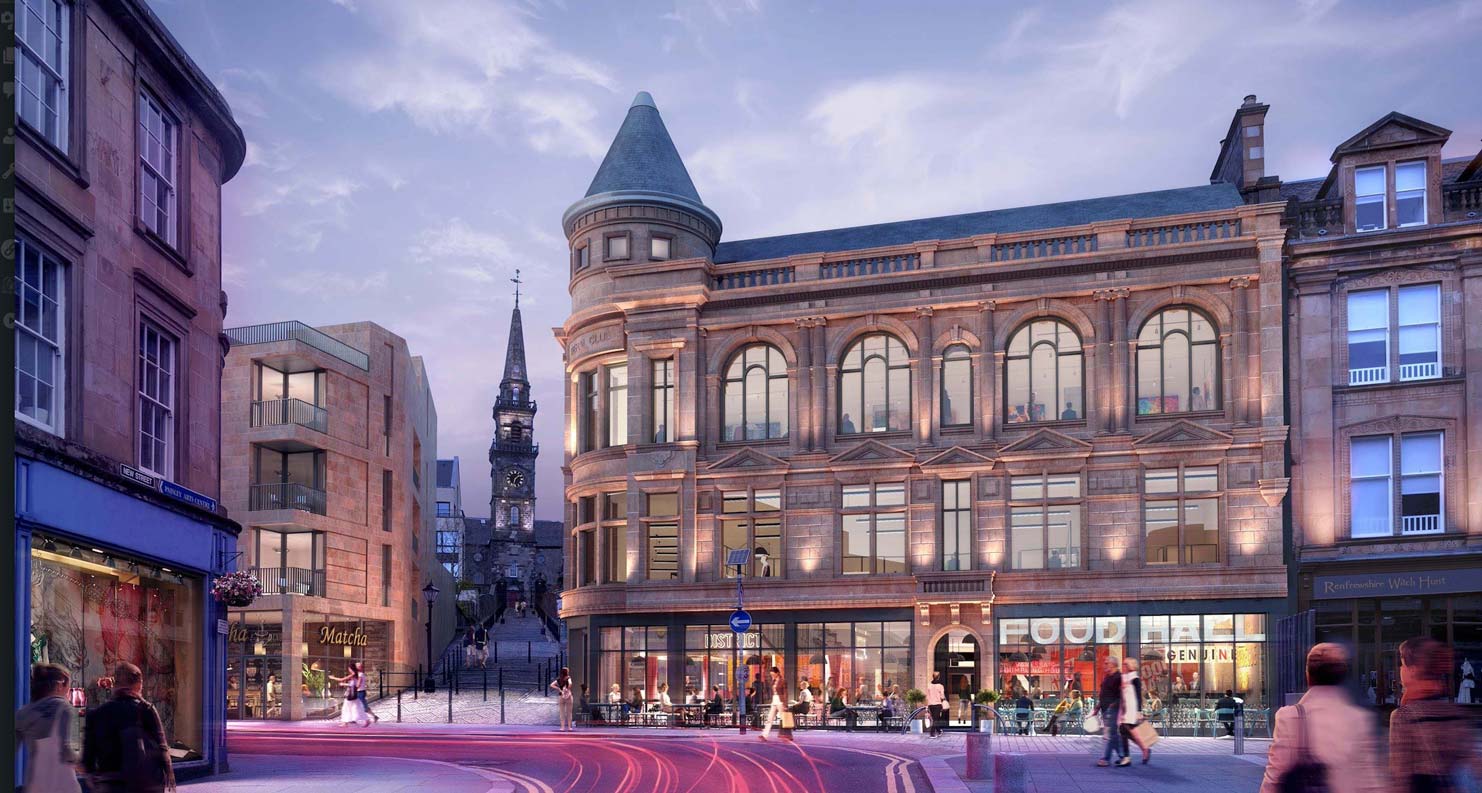Repurposing and sustainable placemaking

We are publishing a series of blogs on designing for a changing climate. Here Threesixty Architecture’s Neal Hemingway writes about the tools available to apply circular economy and respond to the low carbon challenge when designing and re-purposing our places.
In a world with finite resources, an escalating climate crisis and corresponding legislative pressure, the construction industry must redefine the notion of ‘value’ within our built environment.
Re-using materials, repurposing buildings and reducing the carbon cost of construction could allow the industry to develop a circular economy. It must combine these three factors to reduce or eliminate waste and set a new precedent for ‘whole-life value’, over capital expenditure.
As part of a joint initiative between Scottish Enterprise, Construction Scotland Innovation Centre, Zero Waste Scotland and several other partners, Threesixty Architecture and collaborators developed PORTAL.
This is a new methodology to specifically address the circular economy and low carbon challenge in construction. It is aimed at setting new standards in whole-life value and design flexibility within construction with a focus on efficiency, adaptability, and resilience.
The material bank
An important element to the PORTAL study was the principle that buildings should be viewed as ‘material banks’. With raw materials becoming increasingly more expensive, re–use will provide a cost-effective alternative. Building materials that are designed to be reused several times will retain value rather than depreciate.
The value of the building throughout its whole lifespan will become a more important measure rather than the initial capital expenditure. Buildings would be both the construction industry’s ‘material banks’ and an increased asset to the building owner.
Designing for re-use
Materials, specification and assembly should be targeted choices directed at whole-life value. By integrating these choices into design, the industry can move towards re-use with a fundamental emphasis on repurposing for future lifecycles.
To re-use materials effectively, ease of future disassembly must be made a priority to best retain the value of materials. Design must have built-in flexibility to reflect changes in market demands, for recycling materials and structures.
Our urban fabric is rapidly changing. It is financially unsustainable to go forward in design with buildings that only cater for a single iteration. PORTAL is a new methodology aimed at setting new standards in whole-life value and design flexibility within construction.
Repurposing existing assets
The changing patterns of retail have given us an excellent opportunity to rebalance retail dominance by reintroducing uses that meet the community’s needs and a low carbon future.
Repurposing a large, single-use asset such as a shopping centre or department store can be the catalytic move to transform a whole high street or town centre. The re-use of part or all of these single ownership properties permits the introduction of new uses that better serve the community, encourage sustainable transport, and repopulate our town centres.
Threesixty Architecture is currently working with several local authorities and private equity landlords in projects that seek to rebalance town centres through repurposing such assets. Through this a number of key typologies are being brought right back into the heart of the town. These include health centres, libraries, council headquarters and attractors such as cinemas and food halls.
Most notable is the Vision for Paisley Town Centre 2030, a Scottish Government pilot project in collaboration with Renfrewshire Council, Scotland’s Towns Partnerships and Revo. This has led to the publishing of A Vision of High Street Regeneration, a ‘lessons learned’ methodology adopted as national guidance.
Social economic benefits
The repurposing of existing assets has a wider impact on the social economic rebalancing of a town centre. Providing much needed services within the heart of communities increases community connectivity. This will lead in turn to improved health and wellbeing. And reducing the need for out-of-town travel and providing improved sustainable transport links and a better pedestrian experience will help lower car use and associated carbon cost.
The re-use of structure and centrality clearly responds to the climate emergency. When we can combine the renaissance of town centres with a low carbon and circular economy approach to construction, we will really start making a difference.
Perhaps just as important is that through repurposing and sustainable placemaking, we can reinvigorate our town centres, creating a place to gather, connect, visit, and belong: true social and economic sustainability.
Share your place-based climate action
We would like to hear from communities and local authorities who are creating carbon conscious places. If you are designing and adapting a place to reduce, repurpose and absorb carbon, please share examples of your work with us.
